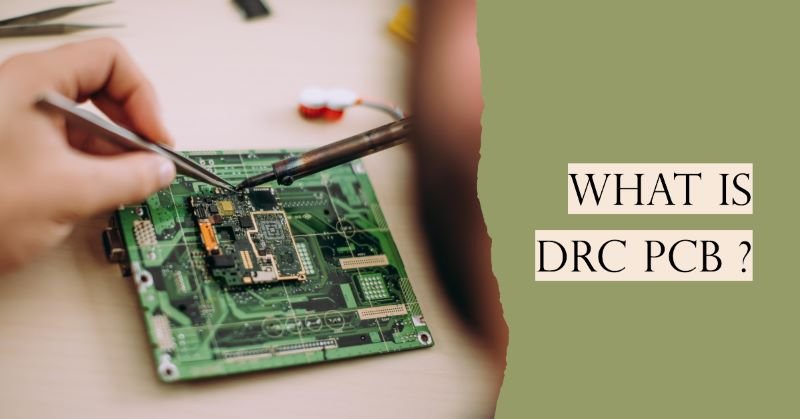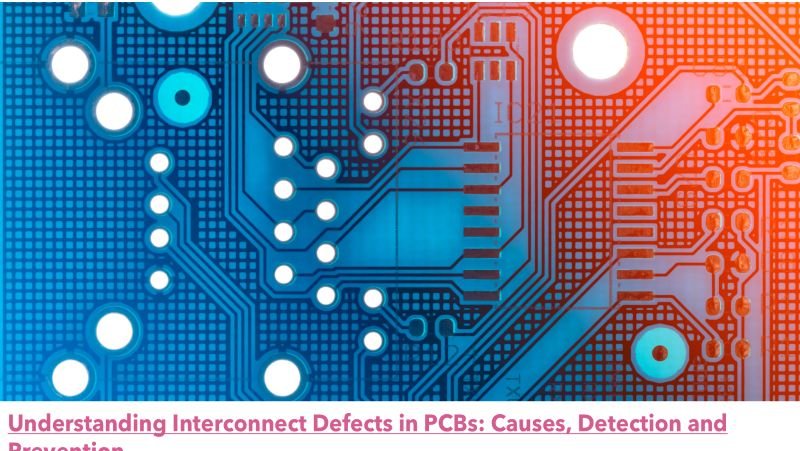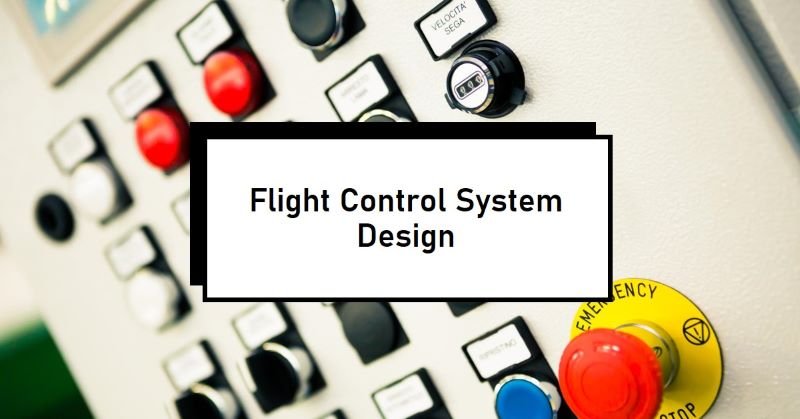What is DRC PCB?
As PCB designs become more intricate, ensuring that the layout adheres to specific manufacturing rules and electrical standards becomes critical. This is where Design Rule Check (DRC) comes into play. DRC is an automated process that verifies whether the PCB layout complies with a predefined set of design rules established by the designer or the PCB manufacturer. These rules may include parameters like trace width, component spacing, and clearance between layers. By catching errors early in the design phase, DRC helps prevent costly issues later in the manufacturing or operation stages.
The role of DRC in PCB design is crucial because even a minor oversight can lead to significant problems, such as short circuits or signal interference, once the PCB is manufactured. By ensuring that the design adheres to a set of predefined rules, DRC helps in detecting these errors before they become critical. This process enhances the overall reliability of the final product and ensures that the PCB can be manufactured efficiently without delays or rework, ultimately saving time and resources.
What is DRC (Design Rule Check)?
Design Rule Check (DRC) is a verification process used in PCB design to ensure that the layout adheres to specific design guidelines or rules. These rules are typically defined by the PCB designer, software, or manufacturer, and they cover aspects such as trace width, component spacing, and via size. The primary goal of DRC is to catch potential design errors before the PCB goes into production, ensuring that the design is both functional and manufacturable.
The purpose of DRC is to ensure that the PCB design is free from violations that could affect its performance or manufacturability. By enforcing a set of predefined rules, DRC helps identify issues like inadequate spacing between components, insufficient trace widths, or incorrect placement of vias. These errors, if left unchecked, could lead to electrical failures, manufacturing defects, or increased production costs. Therefore, DRC acts as a safety net to guarantee that the design is both efficient and reliable.
Explanation of How DRC Helps Verify PCB Layouts Against a Set of Predefined Rules
DRC works by automatically scanning the entire PCB layout and comparing it against a set of predefined rules. These rules can be customized based on the designer’s needs or the manufacturer’s requirements. If any aspect of the design violates these rules—such as a trace being too close to a neighboring trace or a component being too near the edge of the board—the DRC tool flags these issues. The designer can then review and correct these violations before moving forward with the manufacturing process, ensuring a smooth production and reliable end product.
Why is DRC Important in PCB Design?
Prevention of Design Errors
Designing a PCB involves many intricate details, and even small mistakes can lead to malfunctioning circuits. DRC serves as an essential quality control mechanism, catching design errors early in the process. By enforcing rules related to spacing, clearances, and other parameters, DRC prevents common errors like short circuits, signal crosstalk, or insufficient copper width, which could otherwise cause the PCB to fail or underperform.
Ensuring Manufacturability and Reliability of the PCB
Beyond catching design flaws, DRC also ensures that the PCB can be manufactured according to industry standards and the capabilities of the chosen manufacturer. By adhering to these manufacturing constraints, DRC ensures that the board will not face issues during production, such as etching problems or misaligned layers. This increases the likelihood of producing a reliable and functional PCB on the first try, reducing the need for costly rework or redesign.
Avoiding Common Issues Like Short Circuits, Insufficient Spacing, and Violations of Electrical Rules
One of the main reasons DRC is critical is its ability to prevent issues like short circuits, which occur when traces are too close to each other or to components. Insufficient spacing between elements on the PCB can lead to unintended connections, signal interference, or overheating. DRC also ensures that the layout complies with electrical rules, such as proper grounding and current flow, to avoid failures during the board’s operation. By addressing these issues proactively, DRC helps in producing a robust, error-free design.
How Does DRC Work?
The Design Rule Check (DRC) process works by evaluating the PCB layout against a set of rules that govern various design aspects. These rules are typically set based on manufacturing capabilities and electrical requirements. During the DRC process, the software scans the PCB layout for rule violations such as improper spacing, incorrect trace widths, and other common errors. The goal is to catch these issues early in the design process, ensuring that the final PCB meets both design and manufacturing specifications.
Explanation of Tools and Software Used for DRC (Mention Popular Software like Altium, Eagle, etc.)
There are various software tools available for running DRC in PCB design. Popular platforms include:
- Altium Designer: Offers comprehensive DRC capabilities that are customizable and integrated into the design environment. Altium allows for real-time DRC checks, enabling designers to address violations as they occur.
- Eagle: A widely used PCB design tool that provides built-in DRC features, allowing users to define design constraints and run checks before finalizing the layout.
- KiCad: A free, open-source PCB design software with robust DRC functionality that supports real-time error flagging and a wide range of customizable rules.
- OrCAD: Known for its high-end simulation capabilities, OrCAD also provides a powerful DRC tool for checking design rule adherence during layout development.
These tools allow designers to set rules according to specific manufacturing requirements and identify errors in real-time or through batch checks.
How DRC Identifies Violations and Flags Them for Correction
During a DRC, the software cross-references each aspect of the PCB layout with the defined design rules. If a violation is detected, such as two traces being too close to each other, the software will flag the issue by highlighting the problematic area in the layout. Most DRC tools provide detailed reports showing the location and nature of the violation. Designers can then review the flagged issues and make necessary adjustments to correct the violations, ensuring that the design conforms to the required standards.
Common DRC Rules in PCB Design
Trace Width and Spacing
Trace width and spacing are critical parameters in PCB design. The trace width must be wide enough to handle the current passing through it without overheating, and spacing between traces must ensure that electrical signals do not interfere with each other. DRC checks ensure that these values meet the design and manufacturing standards.
Drill Hole Sizes and Pad Diameter
The size of drilled holes for vias and component leads, as well as the pad diameters, must be accurate to accommodate manufacturing tolerances. DRC verifies that the drill holes are the correct size and that the pad diameter is sufficient to ensure good electrical connections and mechanical stability.
Clearance Between Components
There must be adequate clearance between components to avoid mechanical and electrical interference. DRC checks this spacing to prevent issues during manufacturing, such as components being too close, which can lead to soldering problems or electrical short circuits.
Copper-to-Edge Clearance
A minimum clearance between copper traces and the edge of the PCB is essential to avoid short circuits or damage during fabrication. DRC checks this to ensure there is enough space between the copper and the board’s edges, especially for multi-layer PCBs.
Layer Stack-up Verification
For multi-layer PCBs, the DRC process checks the layer stack-up to ensure the correct placement of signal, power, and ground layers. This prevents issues like signal interference and ensures proper layer separation for the desired electrical performance.
DRC in Different Stages of PCB Design
Pre-layout DRC: Initial Checks Before Laying Out the PCB
Pre-layout DRC involves defining design rules and constraints before the actual layout process begins. This stage ensures that the rules are aligned with the manufacturer’s capabilities and the design’s electrical requirements. Pre-layout DRC helps avoid major issues from arising later in the design process by setting clear guidelines at the outset.
Post-layout DRC: Final Checks Before Manufacturing
After the layout is complete, a full DRC run is performed to ensure that the design complies with all established rules. This is a critical step before sending the design to manufacturing, as it ensures that there are no rule violations or errors that could cause production delays or result in a faulty PCB.
Continuous DRC During the Design Process for Real-time Error Prevention
Many modern PCB design tools allow for continuous DRC, meaning that the software performs real-time checks as the layout is being developed. This helps designers catch and fix errors immediately, preventing design rule violations from accumulating and becoming harder to correct later in the process.
Common Issues Detected by DRC
Insufficient Spacing Between Traces or Components
One of the most common issues flagged by DRC is insufficient spacing between traces or components. This can lead to short circuits, signal crosstalk, and other electrical failures. DRC checks the layout to ensure that all traces and components have adequate spacing to prevent these problems.
Via Overlaps and Misalignments
Via overlaps or misalignments occur when vias are placed too close together or when their placement is not optimized for signal routing. This can cause manufacturing defects and signal integrity issues. DRC identifies these problems, allowing the designer to correct via placement before production.
Incorrect Pad Sizes
Incorrect pad sizes can lead to poor soldering and unreliable connections. DRC ensures that pads are of the correct size based on the component specifications and manufacturing guidelines, reducing the risk of assembly errors.
Short Circuits and Open Circuits
Short circuits occur when two electrical paths are unintentionally connected, while open circuits happen when there is an unintended break in the circuit. Both issues can severely affect the functionality of the PCB. DRC is effective in detecting these issues, allowing designers to resolve them before manufacturing.
DRC vs. ERC (Electrical Rule Check)
Explanation of the Difference Between DRC and ERC
Design Rule Check (DRC) and Electrical Rule Check (ERC) are both crucial for ensuring a successful PCB design, but they serve different purposes:
- DRC (Design Rule Check): Focuses on the physical aspects of the PCB layout. It ensures that the design adheres to manufacturing constraints and physical rules, such as trace width, spacing, pad sizes, and clearance between layers. DRC is primarily concerned with the layout’s manufacturability and mechanical integrity.
- ERC (Electrical Rule Check): Concentrates on the electrical aspects of the design. It verifies that the circuit operates correctly by checking for issues like unconnected pins, short circuits, and correct net connections. ERC ensures that the electrical behavior of the PCB matches the design specifications and that all components are correctly integrated into the circuit.
How Both Work Together for Error-Free PCB Design
DRC and ERC complement each other to ensure both physical and electrical correctness of a PCB design. While DRC checks for compliance with manufacturing and physical design constraints, ERC ensures that the electrical functionality of the design is intact. Together, they provide a comprehensive validation of the PCB layout. For instance, DRC might flag a spacing issue that could affect manufacturing, while ERC could detect that a signal trace is not correctly connected, leading to a non-functional circuit. By using both checks, designers can ensure that their PCBs are both manufacturable and functionally correct.
Best Practices for DRC in PCB Design
Tips for Setting Up Effective DRC Rules
- Understand Manufacturing Capabilities: Tailor your DRC rules based on the capabilities and constraints of your PCB manufacturer. This includes parameters like minimum trace width, via sizes, and spacing requirements.
- Define Clear Design Goals: Establish rules that align with the specific needs of your project, including signal integrity, power distribution, and mechanical constraints.
- Use Industry Standards: Incorporate industry-standard design rules to ensure your PCB design meets common reliability and performance benchmarks.
Regularly Running DRC Checks During the Design Process
- Early Detection of Issues: Run DRC checks frequently throughout the design process to catch issues early and avoid compounding problems. This can be done at key stages, such as after major layout changes or before major design reviews.
- Incremental Checks: Use incremental DRC checks after making significant changes to the design. This helps in identifying issues related to recent modifications and ensures that new errors are detected promptly.
Adjusting DRC Rules Based on Specific Manufacturing Requirements
- Communicate with Manufacturers: Discuss your design with the PCB manufacturer to understand their specific requirements and constraints. Adjust your DRC rules accordingly to match these requirements.
- Update Rules for Different Layers: If your PCB design includes multiple layers or specialized components, adjust your DRC rules to account for these variations and ensure compliance with all relevant standards.
Final Verdict
In summary, Design Rule Check (DRC) is an indispensable tool in PCB design that ensures the physical and electrical integrity of a layout. By enforcing predefined design rules, DRC helps prevent errors that could impact the functionality or manufacturability of the PCB. Understanding the difference between DRC and Electrical Rule Check (ERC) clarifies how both contribute to a successful design: DRC focuses on physical constraints, while ERC ensures electrical correctness.
Adhering to best practices, such as setting effective DRC rules, running checks regularly, and adjusting rules based on manufacturing needs, ensures that your PCB design is robust, reliable, and ready for production. By integrating DRC effectively into your design workflow, you can significantly reduce the risk of errors and enhance the overall quality of your PCBs.








